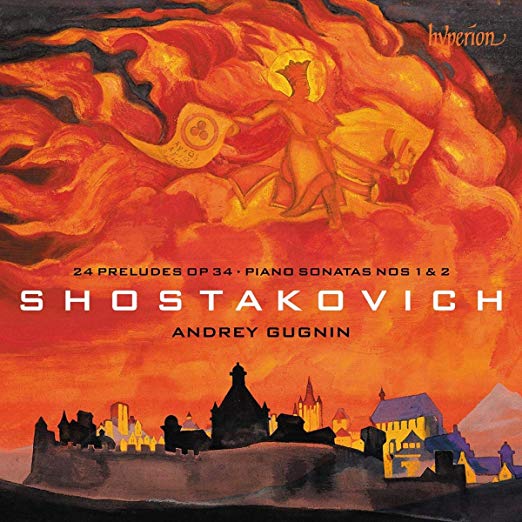
ESSENTIAL RECORDINGS

I'm sure everyone will agree that Dmitri Shostakovich (1906-1975) was one of the most important composers of the 20th century, and that his impressive symphonies are a vivid reflection of the times they were conceived in. As a matter of fact, they should rewrite the history books and as a footnote to the middle decades of the century, recommend that people listen to his symphonies 5 to 11 to get a true emotional feel of what that period in time was like. These works are powerful symphonic statements that capture human strife and dissension like nothing else before or since.
But to truly understand how these iconoclastic symphonies came to be, one has to listen to this composer's more intimate miniature pieces for solo piano. The piano was not only an instrument Shostakovich used for work, but a sanctum to which he turned to on a daily basis to play his beloved Bach preludes and fugues. So all of this composer's idiosyncrasies, despair, irony, sarcasm, realism and outlook are embedded deep within his piano music. Take for example his Piano Sonata No. 1, Op. 12, a statement of his own youthful revolt against the October Revolution of 1917. Like his Second and Third symphonies it is the expression of a composer intent on changing the laws of music if not the world. It is dark, wild and devilishly difficult to play. But pianist Andrey Gugnin makes light work of this and actually seems to revel in the savagery of it all which allows the listener to experience its despair first hand. The race to the finish in its final two minutes is exhilarating under Gugnin's hands.
Like Bach, the 24 Preludes, Op. 34 explore all the keys, but unlike Bach not only for harmonic variety and possibilities, but more so like Chopin, for the various moods and colors that each individual key evokes. For example, a piece in C-sharp minor awakens a completely different mental or emotive state than a piece in G major. And within a time span of only two minutes, Shostakovich was able to not only invoke that state but also express it to its fullest in spirit, character and form. What I admire here about Andrey Gugnin's approach is that he avoids the temptation to impose his own emotive stamp on each one, but instead understands that each one is in and of itself complete, and plays them accordingly. If you listen to them individually and take the time to pause before the next one you will see what I mean.
This new Hyperion recording is a must for any serious Shostakovich enthusiast, as well as a superlative measure of Andrey Gugnin's artistry.
Jean-Yves Duperron - September 2019